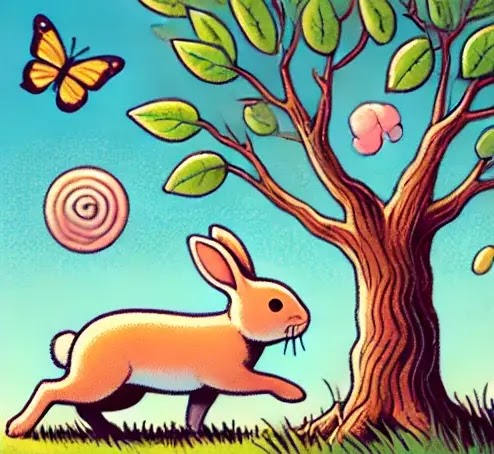Rucete ✏ Campbell Biology In a Nutshell
What is life? It's a question so fundamental yet so complex that even the simplest answer requires a deep dive into the patterns that tie all living things together. Studying life isn’t just about memorizing facts about plants, animals, and microorganisms—it’s about recognizing the unifying themes that make biology a cohesive science. These themes form the backbone of biological understanding and help us make sense of the enormous diversity of life.
Unit 1 THE CHEMISTRY OF LIFE
Concept 1.1 The study of life reveals unifying themeLife: More Than Just a Definition
Life is difficult to define in a single sentence, but we recognize it through shared characteristics. Every living thing exhibits:
- Order: Life is structured and organized, from microscopic cells to entire ecosystems.
- Regulation: Organisms maintain stable internal conditions despite external changes.
- Growth and Development: Genetic instructions guide the formation and changes in an organism’s life.
- Energy Processing: Every living thing needs energy, whether it’s from the sun or from consuming other organisms.
- Response to the Environment: Living beings interact with their surroundings, from plants turning towards the sun to animals fleeing predators.
- Reproduction: Life continues because organisms pass on their genes.
- Evolutionary Adaptation: Over generations, species change to better fit their environments.
These properties collectively define what it means to be alive.
The Five Unifying Themes of Biology
To make sense of life, biologists use five key themes that apply across all forms of life, from bacteria to blue whales.
1. Organization: Life at Every Level
Biology operates at different levels, from the microscopic to the planetary scale. We can break this down into a hierarchy:
- Biosphere – The entire planet and all living organisms.
- Ecosystems – Interactions between living things and their environment.
- Communities – Different species coexisting in an area.
- Populations – A group of the same species in one place.
- Organisms – Individual living things.
- Organs & Tissues – Structures that perform specific functions.
- Cells – The smallest unit of life.
- Organelles – Functional components within cells.
- Molecules – Chemical structures that make up life.
At each level, emergent properties appear—characteristics that arise when parts come together in a complex system. For example, a single neuron doesn’t think, but an entire network of neurons gives rise to consciousness.
2. Information: DNA and the Language of Life
At the heart of all life is DNA (deoxyribonucleic acid)—the molecule that carries genetic instructions. DNA is like a book of recipes, containing codes (genes) that tell cells how to build proteins, which are responsible for structure and function in organisms.
The process of turning DNA into a functional product is called gene expression, which follows this pathway:
DNA → RNA → Protein
Since the genetic code is universal across all life forms, it serves as strong evidence of common ancestry. Advances in genomics (studying entire sets of genes) and proteomics (studying proteins) have revolutionized biology, allowing us to decode life's instructions at a massive scale.
3. Energy and Matter: The Fuel for Life
Life runs on energy, and organisms must capture and transform it to survive. The sun is the primary energy source, fueling photosynthesis in plants, which converts sunlight into chemical energy. Animals and other consumers then obtain energy by eating plants or other organisms.
In an ecosystem, energy flows in one direction (from sunlight to organisms, eventually lost as heat), but matter cycles(such as carbon and nitrogen being reused). This balance keeps life running smoothly.
4. Interactions: A Web of Connections
Nothing in biology exists in isolation. Organisms constantly interact with one another and their environment:
- At the cellular level, molecules work together in feedback mechanisms to regulate processes like blood sugar.
- In ecosystems, organisms can help or harm each other—some relationships are mutualistic (bees pollinating flowers), while others are competitive or predatory.
- Human activity also plays a role, often negatively affecting the environment, such as through climate change caused by fossil fuel emissions.
From microscopic reactions to global weather patterns, biological interactions shape the world.
5. Evolution: The Core of Biology
The greatest unifying theme in biology is evolution. It explains both the unity (common features) and diversity (differences) of life. Over generations, species change due to natural selection, favoring traits that improve survival and reproduction. This explains why all life is connected through a shared evolutionary history.




